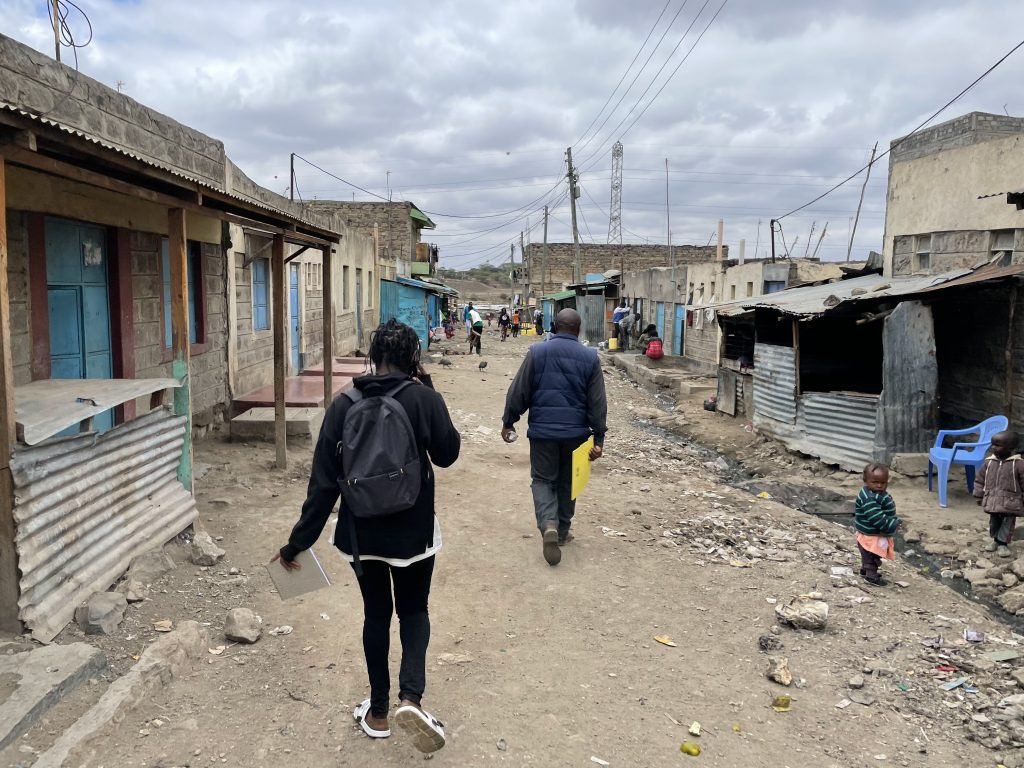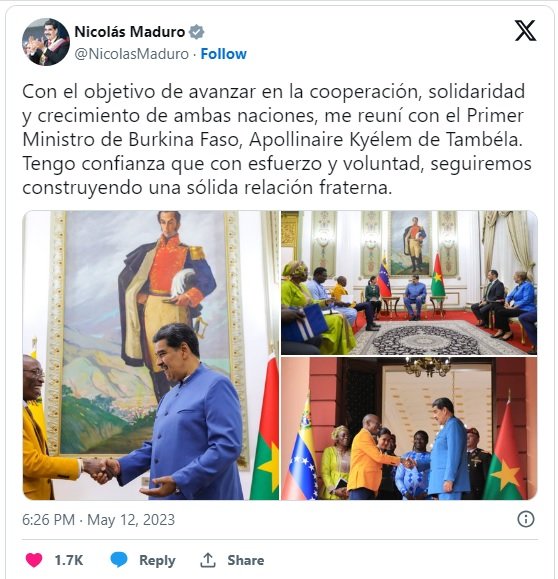By Adrian Wilson, Irene Nduta, Somo Abdi, and Jethron Ayumbah Akallah
Republished from Africa Is A Country.
The following account is based on ethnographic research that Adrian Wilson, Irene Nduta, and Somo Abdi conducted in Kayole Soweto, Nairobi in 2022.
In August 2020, people all over the development world started talking about water in Nairobi. There was a lot of anger, and some calls for sending people to the guillotine. The reason: the publication of results from a development randomized controlled trial (RCT), run by two American development economists, working together with the World Bank. In order to compel property owners in Kayole-Soweto—a relatively poor neighborhood in eastern Nairobi—to pay their water bills, this experiment disconnected the water supply at randomly selected low-income rental properties.
There’s no doubt that water is a problem in Nairobi. As Elizabeth Wamuchiru tells us, the water system in the city has a built-in spatial inequality inherited from the British colonial era. Visitors to the city can readily see the differences between the cool, leafy, green neighborhoods of Kilimani and Lavington—segregated white neighborhoods under colonialism, now home to rich Kenyans, foreigners, and NGOs—and the gray and dusty tin-roof neighborhoods of Mathare, Kibera, Mukuru, and Kayole, home to the lower-income Kenyans excluded from Nairobi’s prosperity.
Today’s water system reflects this history of inequality. Nairobi’s water is harnessed from a combination of surface and groundwater sources; however, the city’s groundwater is naturally salty and very high in fluoride. Piped water systems, provided to upper- and middle-income housing estates, do not exist in the vast bulk of the city’s poorer neighborhoods, where people must instead buy water from vendors—often salty water pumped from boreholes, or siphoned off from city pipes through rickety connections that are frequently contaminated with sewage. In the richer neighborhoods, Nairobi Water Company, a public utility, sells relatively clean piped surface water for a fraction of the price paid by poorer Nairobians—a disparity that research has shown to often be the case in other cities in the global South. As the Mathare Social Justice Centre puts it, in poorer neighborhoods such as Kayole-Soweto, “water provision costs more, is less safe, and is less consistent than in other richer parts of the city.”
Researcher Irene Nduta in Kayole-Soweto.
Nairobi’s waterscape has remained opaque to its planners and administrators as well as its residents—both the elite that occupy the planned leafy suburbs of the city, and the urban underclass that lives on the fringes in a perennial survival mode. And while the city has witnessed major developments to improve access and quality of water, some approaches have only ended up reinforcing the economic inequalities in Nairobi’s waterscape. Such developments have often entailed technologies that are inappropriate for the context, “cut and paste” approaches to solving global South problems, and, in many cases, financing models that are covertly anti-poor.
The World Bank’s water project in Kayole-Soweto was a great example of these problems. Between 2016 and 2018, the World Bank and Nairobi Water Company implemented a project to build piped water and sewage connections in Kayole-Soweto among several other lower-income neighborhoods in Nairobi.
The project design was driven by the kind of “neoliberalism lite” that characterizes the Millenium Development Goals-era World Bank. The project’s water connections would be paid for only in part by World Bank grants. The rest of the cost would be borne by users, who would take out loans of $315 USD per connection, payable over five years at an interest rate of 19%. Each property would get a single connection, with a water tap and a flushing toilet. Under a program called Jisomee Mita (“read your own meter”), water meters would be digital, and billing payment can be made digitally via mobile phone. The project was framed as a “magic bullet” that not only embraced the supposed advantages of digitized systems, but also provided a financial model purportedly tailored to the needs of the poor of Kayole-Soweto.
As people in Kayole-Soweto told us, the project was plagued with problems right from the onset (some of these problems are even described in the World Bank’s own 2019 project evaluation). The water supply pipes were supposed to be buried several meters under the streets, but instead were scarcely buried below the surface of Soweto’s dirt roads, often allowing sewage to leak into the pipes. The sewage piping, which World Bank officials told community members would be eight inches in diameter, was instead four inches, thus resulting in constant blockages. No one was sure why implementation wasn’t done to the standard promised, but corruption was widely suspected.
One of the World Bank-built water lines running through sewage in Kayole-Soweto.
And, people told us, when trying to pay back their water connection loans, they found Nairobi Water Company’s billing and payment systems to be opaque at best and criminal at worst. One man told us: “I went and paid, but after paying it… I followed up on that payment, and… I was told that I haven’t paid this money. And I went back [and] I paid for it again. And that’s how I lost [Ksh] 4,900” (about $42 USD). Receipts are nonexistent; statements are nonexistent; people pay, and their money often simply disappears.
And while continuing to largely meet demand in the wealthier neighborhoods, Nairobi Water Company has resorted to what it calls “micro-rationing” in Kayole-Soweto. Water is typically only piped in one day per week, for a few hours at a time. People will hurry to fill jerrycans of water for the week during these few hours—and if they’re at work when the water comes, then they’re out of luck. Often, Nairobi Water Company will pipe in salty borehole water instead of the clean water that residents were promised they’d receive. And, for many customers, water has stopped flowing entirely, for weeks, months, or even years at a time, with no explanation. But even in such cases, Nairobi Water Company still insists that people make payments on their water connection loans—paying down their debt for a connection that provides them with no water. “Unalipia hewa,” one man told us—“you pay for air.”
The RCT: adding insult to injury
In 2018, two American development economists, Paul Gertler and Sebastian Galiani, started a randomized controlled trial (RCT) aimed at “improving revenue collection efficiency” on the debt that property owners owed on these water connection loans in Kayole-Soweto. Their argument: the problem with water supply in Kayole-Soweto isn’t any of the problems that we described above. The problem is simply that property owners aren’t paying their water bills, thus undermining Nairobi Water Company’s revenue and preventing them from supplying water. (Our finding was the exact reverse: many people stopped making payments on their connection loans out of frustration at water that flowed only a few hours one day per week, if at all.)
In order to test a punitive method for fixing this problem, these two economists turned to an RCT. The RCT, a popular method in development economics for the last two decades, is used to test a development intervention by (1) randomly dividing people into “treatment” and “control” groups; (2) giving some “treatment” to the first group, while withholding it from the second; and (3) measuring the difference in outcomes. While pioneers of the method were rewarded with the Nobel Prize in Economics in 2019, critics are wary of the idea of development economists experimenting on the poor.
In this case, the economists, working with Nairobi Water Company and the World Bank, identified customers who were behind on their water connection loan payments, divided these randomly into treatment and control groups, and disconnected the water at treatment properties, but not at control properties. They found that disconnecting people’s water had a large positive impact on repayment rates (as one person put it during the Twitter controversy: “uh, duh?”). This is rigorous proof, they argue, that water disconnections can help improve a water utility’s revenue enforcement. The authors of this experiment don’t mention the myriad problems with Nairobi Water Company or with Nairobi’s water system more generally.
A map from the publication reporting this RCT’s results, showing how households in Kayole-Soweto were randomly assigned to “treatment” or “control” groups.
Now, let’s unpack this a bit. This experiment would have been ethically dubious in a context in which water service was working perfectly. This experiment is that much more ethically bankrupt in a context in which the water system is as woefully dysfunctional as it is in Kayole-Soweto. Just to give one example of the ethical acrobatics in the economists’ publication describing this project: research guidelines in the US, where both of these development economists hold professorships, dictate that research subjects are supposed to consent to participation in any research, let alone an experiment. The authors tell us that tenants whose water was disconnected had in effect pre-consented to disconnection by the fact of having signed a contract to get the water connection loan in which it is written that your water will be disconnected if you fail to pay. This very “thin” understanding of consent ignores the question of obtaining consent to participate in the experiment—and it also doesn’t apply to the tenants living at these properties, who never signed any such contract, and who also lost their water.
We told several property owners whose water was shut off during the experiment that the economists who ran this experiment said in their publication that the experiment didn’t cause any harm to these research subjects. (It’s important to note that most of these property owners aren’t rich—most of the property owners we talked to live in a slightly nicer unit alongside their tenants.) Matthew, a property owner we interviewed, told us how, when his property’s water was disconnected, several people living at his property—a disabled woman, as well his own 95-year-old grandmother—were forced into the indignity of defecating in basins, which his wife would dump in the Ngong River. Another property owner, Kelvin, told us simply, “We don’t have water and water is life. So, how can you say it doesn’t harm anyone, how, how?”
What can we learn from this?
Water in Nairobi is horribly unequal. Into this unjust context came, first, the World Bank, with a neoliberal project plan emphasizing “cost-sharing,” and with a naive and misplaced trust in the ability of Nairobi Water Company to carry out this project fairly; and, second, two development economists, who were willing to treat poor Sowetans like guinea pigs, and who simply took Nairobi Water Company at their word when the company said that the only problem with water in Kayole-Soweto was that people weren’t paying their bills. Were these just scare tactics to squeeze residents into paying for a service they deemed unreliable? Was this a question of the ugly side of a capitalist market model that is insensitive to the plight of the poor and continues to disinherit them of their right to the city?
The World Bank has, since 2000, stepped back from the stringent structural adjustment plans that the Bank imposed on one African nation after another in the 1980s and 1990s. They now tend to focus their energies on projects like this one, often implemented together with African governments, and often focused on enhancing state capacity to fill its citizens’ basic needs. But the neoliberal ideology, while toned down, is still there: the Bank’s insistence that users pay a large share of the water connection cost, via a private bank loan, is characteristic of this new and more subtle neoliberalism.
In relation to experimentation, and development RCTs, there’s something scary about the degree of power that Western academics can exercise over poor people in places like Kayole-Soweto. To be clear, we aren’t saying that this experiment is typical of development RCTs. In our research, we found this water disconnection RCT to be a very extreme example; most RCTs are conducted with fairly or even very good ethical practices. What this experiment shows, though, is that if a foreign researcher wants to carry out an unethical RCT in a place like Kenya, they can. Existing ethical safeguards are obviously not working.
In finding a way forward for the World Bank’s water project in Kayole-Soweto, we must defer to the demands of the Sowetans we met and interviewed. Repeatedly, they told us that they were very willing to pay for water—if that water service worked, and worked consistently. They told us that they wanted the World Bank to return to the community, to hold meetings with community members, and, with their input, to rebuild the water and sewage infrastructure in Kayole-Soweto to a proper standard. We believe that the World Bank owes this to the people of Kayole-Soweto.
As for the economists and others running RCTs in Kenya, the existing system of ethical safeguards clearly failed the people of Kayole-Soweto. We will set aside the argument that experiments conducted by global North researchers on poor people in the global South should not happen at all. The fallout from this experiment has led to suggestions for reforms to the research approval, funding, and publication processes, in order to ensure that ethical principles are actually followed. Echoing these suggestions, we would encourage actors in this research space to introduce mechanisms to ensure that safeguards are not optional but rather mandatory. And we believe that there should be an ethical mandate of genuine “equipoise” in development RCTs: researchers should be genuinely uncertain whether the “treatment” or the “control” is better for the research subjects. (In the experiment in Kayole-Soweto, that was obviously not the case.)
Finally, the Nairobi County government is currently debating a bill that could privatize Nairobi Water Company. We believe that privatization is not the solution for water in Nairobi. In the Kenyan health care system, for example, we have consistently learned that privatization does not serve the poor. Past examples of water privatization—in Cochabamba, Bolivia, in the late 1990s and, closer to home, in Dar es Salaam in the 2000s—ended in complete failure. We strongly believe that reform and democratized governance—not privatization—of Nairobi Water Company should be part of the way forward. And in the context of the ongoing crisis over the escalating cost of living, we believe strongly that a privatized water company will be that much less likely to ensure that water is affordable (if not free) for even the poorest Nairobians. Water justice, as enshrined in Kenya’s 2010 constitution, must be made a reality for poor people living in precarious urban neighborhoods like Kayole-Soweto. We echo the words of Mathare Social Justice Center: “maji ni uhai, maji ni haki”—water is life, water is a right.
Adrian Wilson is a PhD candidate in anthropology at the University of California at Berkeley.
Faith Kasina is a community activist with the Kayole Community Justice Centre.
Irene Nduta is a community activist with the Kayole Community Justice Centre.
Jethron Ayumbah Akallah is a lecturer in the Department of History and Archaeology at Maseno University.











